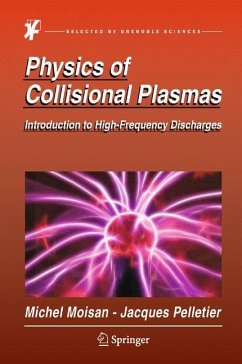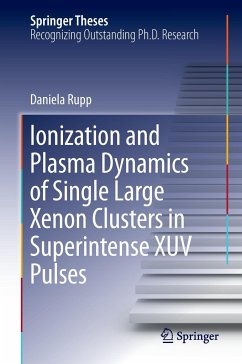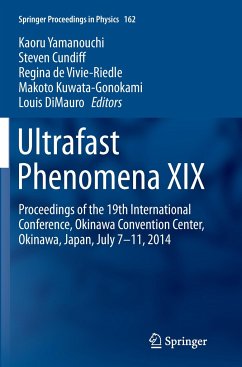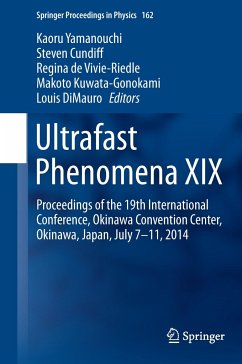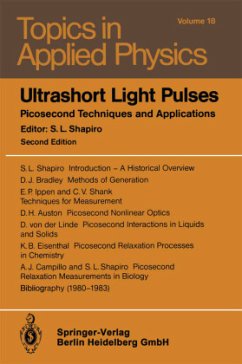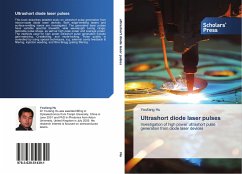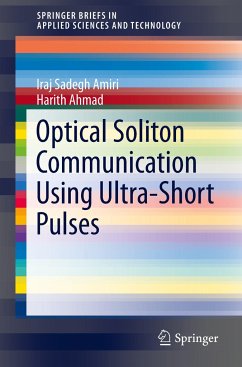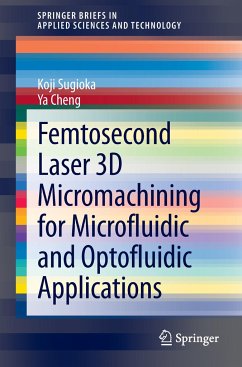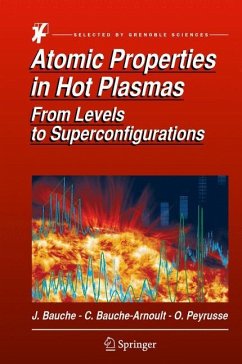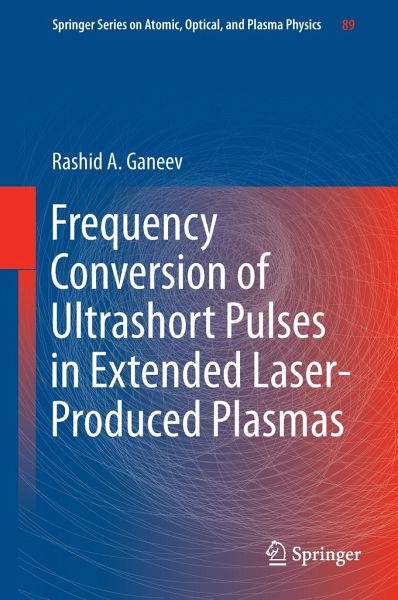
Frequency Conversion of Ultrashort Pulses in Extended Laser-Produced Plasmas
Versandkostenfrei!
Versandfertig in 6-10 Tagen
76,99 €
inkl. MwSt.
Weitere Ausgaben:

PAYBACK Punkte
38 °P sammeln!
This book offers a review of the use ofextended ablation plasmas as nonlinear media for HHG of high-order harmonicgeneration (HHG). The book describes the different experimentalapproaches, shows the advantages and limitations regarding HHG efficiency anddiscusses the particular processes that take place at longer interactionlengths, including propagation and quasi-phase matching effects. Itdescribes the most recent approaches to harmonic generation in the extremeultraviolet (XUV) range with the use of extended plasma plumes, and how thesediffer from more commonly-used gas-jet sources. The main...
This book offers a review of the use ofextended ablation plasmas as nonlinear media for HHG of high-order harmonicgeneration (HHG). The book describes the different experimentalapproaches, shows the advantages and limitations regarding HHG efficiency anddiscusses the particular processes that take place at longer interactionlengths, including propagation and quasi-phase matching effects. Itdescribes the most recent approaches to harmonic generation in the extremeultraviolet (XUV) range with the use of extended plasma plumes, and how thesediffer from more commonly-used gas-jet sources. The main focus is on studiesusing extended plasmas, but some new findings from HHG experiments in narrowplasma plumes are also discussed. It also describes how quasi-phase-matching inmodulated plasmas, as demonstrated in recent studies, has revealed differentmeans of tuning enhanced harmonic groups in the XUV region.
After an introduction to the fundamentaltheoretical and experimental aspects of HHG, a review of the most importantresults of HHG in narrow plasmas is presented, including recent studies ofsmall-sized plasma plumes as emitters of high-order harmonics. In Chapter 2,various findings in the application of extended plasmas for harmonic generationare analyzed. One of the most important applications of extended plasmas, thequasi-phase-matching of generated harmonics, is demonstrated in Chapter 3,including various approaches to the modification of perforated plasma plumes.Chapter 4 depicts the nonlinear optical features of extended plasmas producedon the surfaces of different non-metal materials. Chapter 5 is dedicatedto the analysis of new opportunities for extended plasma induced HHG. Theadvantages of the application of long plasma plumes for HHG, such as resonanceenhancement and double-pulse method, are discussed in Chapter 6. Finally, asummary section brings together all of these findings and discuss theperspectives of extended plasma formations for efficient HHG and nonlinearoptical plasma spectroscopy.
The book will be useful for students andscholars working in this highly multidisciplinary domain involving materialscience, nonlinear optics and laser spectroscopy. It brings the new researcherto the very frontier of the physics of the interaction between laser andextended plasma; for the expert it will serve as an essential guide andindicate directions for future research.
After an introduction to the fundamentaltheoretical and experimental aspects of HHG, a review of the most importantresults of HHG in narrow plasmas is presented, including recent studies ofsmall-sized plasma plumes as emitters of high-order harmonics. In Chapter 2,various findings in the application of extended plasmas for harmonic generationare analyzed. One of the most important applications of extended plasmas, thequasi-phase-matching of generated harmonics, is demonstrated in Chapter 3,including various approaches to the modification of perforated plasma plumes.Chapter 4 depicts the nonlinear optical features of extended plasmas producedon the surfaces of different non-metal materials. Chapter 5 is dedicatedto the analysis of new opportunities for extended plasma induced HHG. Theadvantages of the application of long plasma plumes for HHG, such as resonanceenhancement and double-pulse method, are discussed in Chapter 6. Finally, asummary section brings together all of these findings and discuss theperspectives of extended plasma formations for efficient HHG and nonlinearoptical plasma spectroscopy.
The book will be useful for students andscholars working in this highly multidisciplinary domain involving materialscience, nonlinear optics and laser spectroscopy. It brings the new researcherto the very frontier of the physics of the interaction between laser andextended plasma; for the expert it will serve as an essential guide andindicate directions for future research.



